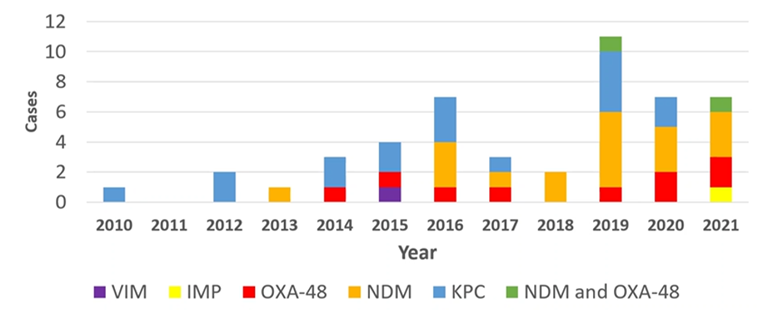Share:
Holding the line against CP-CRE
While prevalent in some other states and even endemic in numerous countries, cases of CP-CRE have remained low in our hospitals and in Oregon.
Most people are familiar with carbapenem-resistant Enterobacteriaceae bacteria (CRE). Klebsiella species and Escherichia coli (E. coli) are examples of Enterobacteriaceae bacteria that can become carbapenem-resistant. Bacteria with enzymes conferring resistance to these antibiotics leave few treatment options.
Fewer people, however, are aware of the additional antibiotic resistance provided by a second gene for a carbapenemase enzyme that breaks down carbapenems. These carbapenemase-producing (CP) bacteria are less frequent in Oregon.

Asante hospitals saw two CP-CRE cases in 2022, which caught the attention of the Oregon Health Authority. CRE infections typically don’t occur in healthy people and are usually spread among patients in hospitals, nursing homes and other long-term care settings. Patients in critical care, as well as those immunocompromised in any location, are particularly vulnerable.
What can you do to help?
- Practice diligent hand hygiene — always.
- Ensure contact isolation precautions are enforced (gown and gloves).
- Prioritize patients with active or history of infection for a private room and bathroom.
- Use chlorhexidine (CHG) for routine bathing.
- Dedicate noncritical equipment (e.g., stethoscopes, blood pressure cuffs) when possible. For items that must be reused, diligently clean them before and after each patient use.
- Adhere to best practices such as being mindful to avoid splashes from sinks and toilets. Ice should be dispensed from a single-use cup or sleeve. Single-use items are preferred for care.
- Educate staff, patients and visitors.
When transferring a patient, it is essential that the receiving facility is notified about the infection (or colonization) with CRE or any other multidrug-resistant organism.
Learn more
- Transmission-based isolation precautions, 400-IC-IC-0629.
 See attachment A.
See attachment A. - Transporting transmission-based isolation precaution patients, 400-IC-IC-0628.

- Isolation requirements, 400-INF-0013.

- CRE information for staff, 400-INF-0015.

- CRE information for patients and families, 400-INF-0014.

If you have a question, please contact the author or relevant department directly.



